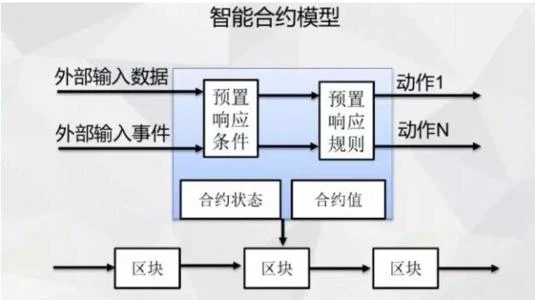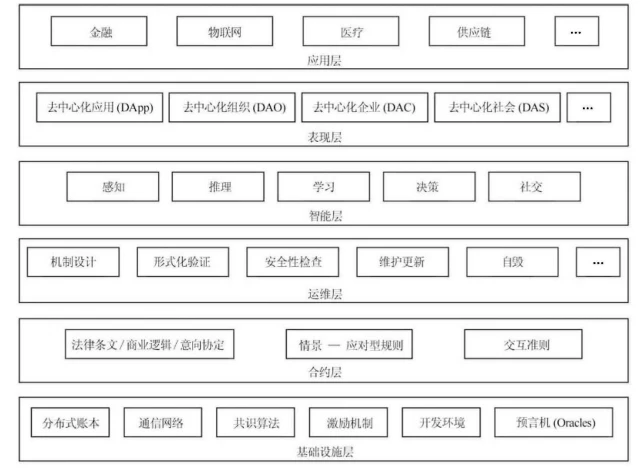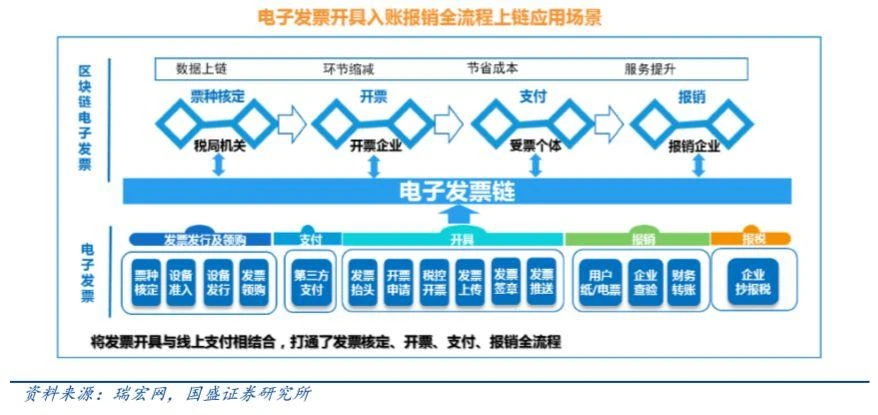With the popularization and application of blockchain technology, smart contracts, as one of the underlying technologies of blockchain technology, have attracted great attention both in academia and industry. The reason why smart contracts are widely concerned, Maoqiu Technology Research Department believes, is mainly due to the characteristics of smart contracts such as decentralization, trustlessness, autonomy and self-sufficiency, and non-tampering.
secondary title
1. The concept of smart contract
The concept of smart contract was proposed by computer scientist and encryption master Nick Szabo around 1993. In 1994, he wrote the paper Smart contracts (Smart contracts), which is the pioneer of smart contracts. do.
image description

Figure 1 Smart contract operating mechanism model
The general purpose of smart contract design is to meet general contract conditions (such as payment terms, seizure orders, privacy, and even law enforcement), minimize malicious and accidental situations, and minimize the use of trusted intermediaries. Related economic goals include reducing fraud losses, arbitration and enforcement costs, and other transaction costs.
Careful study of smart contracts, we can actually find that smart contracts are similar to vending machines in our daily life. Vending machines can realize the sale and purchase of goods through automated programs, without manual participation, and the whole process is executed by pre-written programs. The same is true for the operation mechanism of the smart contract during the sale process.
But the difference is that once the smart contract is completed, its code cannot be changed, such as the smart contract in Ethereum, each smart contract in Ethereum has its own account, just like a vending machine has its own ID , when the external account calls the smart contract selected by itself with a certain tip, it is equivalent to starting the automatic control switch, and the smart contract will automatically execute according to its own code definition.
secondary title
2. Overview of the application fields of smart contracts
image description

Figure 2 Smart contract infrastructure model
(1) Digital Notes
image description

Figure 3 Blockchain electronic invoice process
We all know that digital bills are based on the application of smart contract technology to trigger corresponding automation through whether the pre-set conditions are met while keeping the existing bill attributes, legal rules and market operation rules unchanged.
Although the previous electronic commercial bills can solve the problems of slow speed, easy fraud, and easy loss of paper bills, they cannot fundamentally solve the problem of being cloned, or tampered with, and cannot be supervised because they are still controlled by the central organization.
Digital bills operate smart contract technology, which can simplify the transmission path of electronic commercial bills and reduce costs. At the same time, due to the application of time stamp, point-to-point transmission, and encryption technology, the entire transaction process of the bill can be tracked, so that the whole process becomes clearly visible, and digital bills can establish common constraint codes in the entire blockchain through smart contracts, which can be realized Intelligent digital bill transactions and supervision of the entire process.
Maoqiu Science and Technology Technology Research Department believes that digital bill nodes are jointly recorded and cannot be tampered with, and each link can be checked, verified, and traced to ensure the authenticity and effectiveness of bills, and solve the high cost of manual inspection of invoices and low management efficiency. pain points and difficulties, avoiding the risk of violations caused by false invoices and non-compliant invoices.
(2) Internet of Things
In the leaping development of the information society from the Internet era to the Internet of Things era, the Internet of Things is imperceptibly deepening work, life and society. But from the current point of view, the Internet of Things still faces some pain points in practical applications, and the blockchain smart contract is expected to help the Internet of Things resolve many difficulties with its characteristics of decentralization, openness, transparency, and non-tampering, and the Internet of Things + There have been cases of the dual technology application of Blockchain. For example, IBMs decentralized P2P automatic telemetry system.
IBMs decentralized P2P automatic telemetry system (Adept) is based on three protocols: Blockchain (block chain), BitTorrent (file sharing), and TeleHash (P2P information sending system). Adept can manage product registration. In specific applications, when a product is assembled, the manufacturer can register it in a global blockchain to indicate the birth of a product; when the product is sold, consumers can Register it again into a local (such as a city or province) blockchain for after-sales service. Samsung has incorporated the W9000 washing machine into the Adept system. Using smart contracts, the washing machine will automatically send an order form to the laundry detergent retailer, and can automatically pay the bill to the retailer.
The Internet of Things is an era in which devices, vehicles, buildings, and other entities are linked and embedded with software, sensors, and network connections. Because the Internet of Things is to connect entities to the network, generate, transmit, and share data through the network, to support such a huge network, the number of devices required will be immeasurable. If the current centralized data center is still used to operate, the efficiency will be greatly reduced. , and a large amount of data will require enough data centers to support it. The investment required to build a data center and the later operation and maintenance costs are difficult to estimate.
At the same time, the Internet of Things is also vulnerable to malicious attacks from the management system, which can easily cause data loss and make it difficult to guarantee security. The decentralization and anti-tampering technologies of smart contracts can solve the problems of information loss and privacy protection in the Internet of Things. At the same time, the reduced centralized circulation links also greatly reduce the time cost of information circulation.
Although blockchain + Internet of Things can solve many existing technical problems, there are still some difficulties in the real application. The first is that the blockchain technology is not yet mature; the second is the physical network equipment ( Sensor) life and other issues.
(3) Securities
Credit is the foundation of securities, and clearing and settlement are the core of securities. At present, securities registration, custody, clearing and settlement services in most countries are undertaken by one institution, which leads to the gradual trend towards centralization, lower efficiency and increased costs and risks.
The “Carrot Seal” incident in the securities industry in 2016 sounded the alarm for the securities companies at that time. The reason was that the employees of Guohai Securities engraved their seals privately, triggering bonds with a scale of 16.5 billion, which caused the market capital chain to be tense at that time. This incident has raised concerns about the security and compliance of transactions in the securities industry, and the foundation of integrity has been widely questioned.
The blockchain smart contract technology forms a non-tamperable and non-forgeable database based on time stamps. To tamper with historical information, 51% of the nodes in the entire system must be controlled, which will consume huge computing power and investment costs.
Build a set of general-purpose distributed brokerage trading system based on blockchain technology. By introducing centralized elements, no third-party custodian agency is required to automatically establish trust and realize value transfer in a quasi-real-time manner. Through blockchain technology, the assets traded Transforming into smart contracts to complete point-to-point real-time transactions, clearing and settlement can significantly reduce the cost of value transfer, greatly improve the efficiency of clearing and settlement processes, shorten the time of clearing and settlement, and enhance investment through efficiency and transparency. confidence.
(4) Finance
The application of smart contracts in financial transactions has obvious natural advantages, because the essence of financial transactions is value transfer, and the nature of the assets being traded in financial transactions determines the type of agreement that the parties to the transaction choose. If the party involved in the transaction does not perform according to the terms of the mutual agreement, the automatic execution of the contract will not start, thus protecting the rights of the party who abides by the agreement.
Financial transactions require high-density personal privacy and information security, as well as transaction efficiency and security. Since the smart contract is defined and enforced by the code, there is no need for mutual trust between the two parties of the smart contract, it is completely automatic and uninterruptible. Financial institutions can apply smart contracts to distributed bookkeeping or stocks and financial assets in the blockchain, by establishing rules and replacing contracts with code representations.
At the same time, the smart contracts recorded on the blockchain cannot be modified and do not require auditing, which improves transaction efficiency. It can be seen that smart contracts constrain and guide public behavior, making information more transparent, data easier to track, transactions more secure, and reducing contract execution costs.
Because of these advantages, the RJ3 blockchain consortium formed by Goldman Sachs, JPMorgan Chase and other consortiums took the lead in trying to apply smart contracts to the field of asset settlement, using smart contracts to perform peer-to-peer liquidation on the blockchain platform Corda to solve the traditional liquidation methods. The problem of inefficiency caused by a large number of institutions completing complex approvals and reconciliations. At the same time, it is estimated that more than 200 banks, financial institutions, and securities institutions have participated in Corda’s clearing and settlement test.
(5) Medical
There are multiple stakeholders in the current medical system, and the relationship between them is intricate and the interaction is relatively sensitive, resulting in low operational efficiency of the entire system. When medical data is used by multiple parties, its security and privacy are difficult to guarantee. Therefore, how to ensure the security of patients medical data, prevent the leakage of private information, and improve the efficiency of the entire medical system has become an urgent problem to be solved.
Using the characteristics of the blockchain distributed ledger and its inherent security attributes can provide solutions for data interoperability, security and privacy in the medical field. In addition, the combination of blockchain and smart contracts can Reduce disputes in the medical industry and strengthen supervision, improve the operating efficiency of the medical industry, and promote innovation in medical services.
3. Conclusion
3. Conclusion
References:
References:
1. Li Jie, Chai Yanming, Yang Yan, Bai Fan, etc., Principles and Applications of Blockchain Smart Contract Technology
2. Ouyang, Liwei, Wang Shuai, Yuan Yong, etc., Smart Contract: Architecture and Progress
3. Yang Chichi, The Pioneer of Internet of Things + Blockchain Technology
4. Wang Yuyang, Blockchain + Internet of Things Prospects Emerging Technology and Integration Barriers Still to Be Cracked
5. Dong Fangfang, Shenzhen Window of the World Issues the First Blockchain Electronic Invoice in South China 5A Scenic Area










